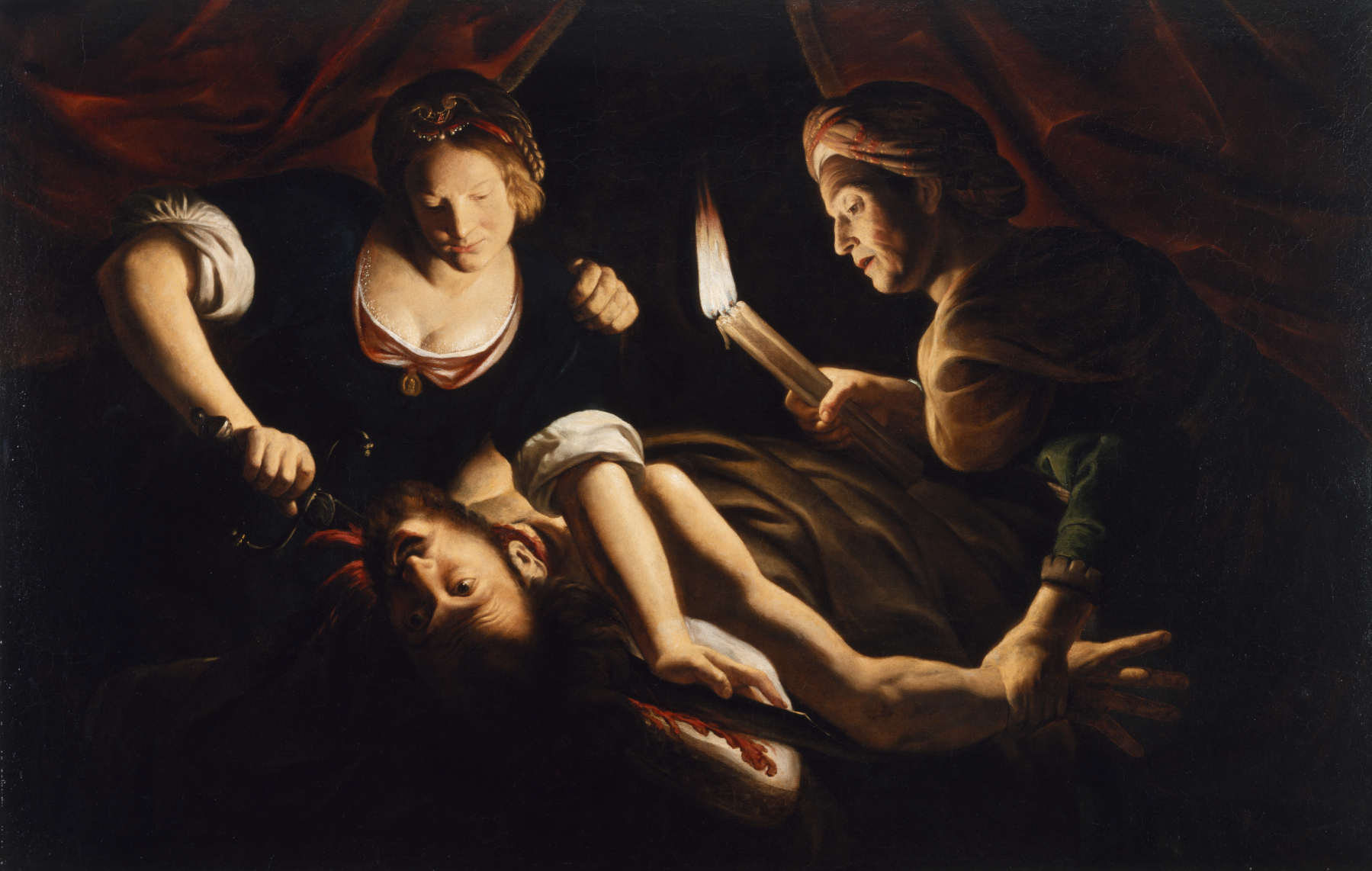Judith Decapitating Holofernes
(Baroque Europe )
According to the Book of Judith in the Catholic Old Testament, the virtuous widow Judith saved her people when the military commanders failed to lift a siege by the Assyrians. She beguiled the enemy General Holofernes into getting drunk and cut off his head. The artist heightened the drama by contrasting Judith's serene determination with the amazement and horror exploding from the general's face. Portraying his head upside down emphasizes Holofernes' defeat and evokes the reversal of societal norms in a woman's victory over a strong man.
By the 1620s, Trophime Bigot (ca. 1579-1650, also known as Master of the Candlelight) was in Rome, where he studied the paintings of Caravaggio (1571-1610). The Italian master had introduced often brutal, naturalistic, close-up scenes lit by a single light source. In this powerful baroque composition, the candle's light concentrates the drama around the clear diagonal movement back from Holofernes's straining arm.
Provenance
Provenance (from the French provenir, 'to come from/forth') is the chronology of the ownership, custody, or location of a historical object. Learn more about provenance at the Walters.
Don Marcello Massarenti Collection, Rome; Henry Walters, Baltimore, 1902, by purchase; Walters Art Museum, 1931, by bequest.
Exhibitions
| 1998-2001 | Highlights from the Collection. The Walters Art Gallery, Baltimore. |
| 1999-2000 | Vive la France! French Treasures from the Middle Ages to Monet. The Walters Art Gallery, Baltimore. |
| 1995-1996 | Going for Baroque. The Walters Art Gallery, Baltimore. |
Conservation
| Date | Description | Narrative |
|---|---|---|
| 11/1/1949 | Treatment | varnish removed or reduced |
| 1/1/1974 | Examination | examined for condition |
| 6/26/1974 | Treatment | x-ray; mounted; cleaned |
| 7/1/1974 | Treatment | examined for condition; inpainted; other; varnish removed or reduced |
| 7/1/1974 | Treatment | examined for condition; other; varnish removed or reduced |
| 4/24/1985 | Treatment | inpainted; loss compensation; other |
| 9/5/1990 | Examination | examined for condition |
Geographies
Italy, Rome (Place of Origin)
Measurements
H: 49 3/8 × W: 77 3/8 × D: 1 in. (125.41 × 196.53 × 2.54 cm)
Framed H: 64 × W: 92 × D: 4 in. (162.56 × 233.68 × 10.16 cm)
Credit Line
Acquired by Henry Walters with the Massarenti Collection, 1902
Location in Museum
Accession Number
In libraries, galleries, museums, and archives, an accession number is a unique identifier assigned to each object in the collection.
In libraries, galleries, museums, and archives, an accession number is a unique identifier assigned to each object in the collection.
37.653


